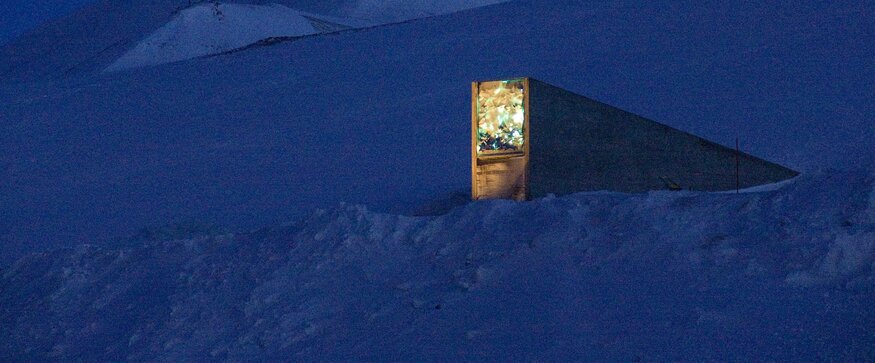National Geographic: Banking Seeds for Doomsday

5 March 2012
National Geographic writer David Braun discusses a recent deposit to the Svalbard Global Seed Vault.
In these times of tumultuous weather patterns and no certainty about the future stability of Earth’s climate as civilization has known it, it’s reassuring that a significant portion of the planet’s legacy of plant diversity has been stashed for safekeeping deep inside an Arctic mountain.
The “Doomsday Seed Vault”—so called because it is protecting agriculture systems worldwide from disasters natural or manmade—has now secured over 740,000 samples or “accessions” on Norway’s remote Svalbard archipelago, the Global Crop Diversity Trust said in a recent news release to mark the fourth anniversary of the project.
The Trust maintains the seed vault, in partnership with the Norwegian government and the Nordic Genetic Resources Center, as a back-up to the living crop diversity collections housed in “genebanks” around the world.
“Rare wheat collected from the ‘Roof of the World’ in the Pamir Mountains in Tajikistan; amaranth, with its exotic blood-red stalks that are used in a ‘Day of the Dead’ drink; barley that helped spawn the craft beer revolution; and once- forgotten forage crops that could sustain livestock in these climate-stressed times are among the 24,948 seed samples arriving [last week] for the fourth birthday of the Svalbard Global Seed Vault (SGSV),” the Trust said.
“The incredible range and importance of the seeds that have been sent here this week for safekeeping provide vivid examples of why we need to carefully collect and preserve our planet’s crop diversity,” said Cary Fowler, executive director of the Global Crop Diversity Trust. “Our crop diversity is constantly under threat, from dramatic dangers such as fires, political unrest, war and tornadoes, as well as the mundane, such as failing refrigeration systems and budget cuts. But these seeds are the future of our food supply, as they carry genetic treasure such as heat resistance, drought tolerance, or disease and pest resistance.”
Among the contributors for the fourth anniversary are the United States Department of Agriculture’s Agricultural Research Service (USDA-ARS) National Plant Germplasm System (NPGS), the International Center for Agricultural Research in the Dry Areas (ICARDA) in Syria, the International Center for Tropical Agriculture in Colombia (known by its Spanish acronym CIAT), and the national crop genebanks of Tajikistan and Armenia. Both CIAT and ICARDA are part of the CGIAR Consortium of International Agricultural Research Centers, which is the largest single contributor of seeds to the vault.
